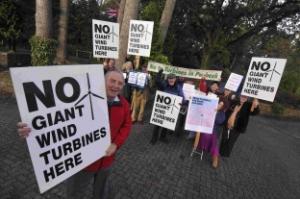Chris Pook, head of the new Green Economy Team at BIS, was addressing critics of Government policy who are concerned that the long term benefits of investment in the green economy are not worth the short term costs.
Speaking at the Low Carbon Communities for Future Growth conference at the QEII Centre in London today, Pook said that all business had a crucial role to play in the transition to a green economy, in developing jobs, skills and growth in environmental goods and services (EGS) and across the board.
Unusually, for nowadays, he quoted the Stern Review, commissioned by the Treasury under Gordon Brown but now archived on their web site, in which Nicholas Stern famously pronounced that the costs of doing nothing are far greater on the long term than investing now.
The Green Economy Team works with Local Enterprise Partnerships on low carbon/green innovation, green infrastructure, stimulation of supply chains and green low carbon clusters.
Over 80% of the 60,000+ companies identified as working in this sector are SMEs, and 30% are in manufacturing. BIS forecasts their growth rate as a staggering 45%.
"Sustainable growth is based on creating our energy and economic security," he said, "but the value of the environment is not often recognised by business or planning, meaning that we consume beyond the limits of resources."
The contradiction, he said, is that "a growing economy is the only way to secure the change".
But the impact will vary from sector to sector, and so "a strong sectoral perspective is required to understand how the impacts of investment fall across the economy".
There are some easy winners, and he quoted DECC's cost-benefit assessment MACC curve which shows, for example, that CERT, local travel and community energy saving are in this category but at the other end of the curve, the Renewable Heat Incentive (RHI), zero carbon homes and decarbonising car transport requires greater investment up front.
Under the Green Deal, for example, it will be the insulation and construction companies who will experience the greatest benefits, while the Energy Market Review and carbon price floor will help new renewable and nuclear generators, he said.
It is energy-intensive industries and tax and bill payers who have been complaining loudest about the cost of low carbon policy, but Pook said that the cost to them will still be less than the future cost of doing nothing at this point.
"In fact, the energy-intensive industries like steel and chemical sectors have a key role to play in the transition to a green economy, in, for example, providing the materials we need," he observed.
"If we were to source instead our raw materials abroad, it would result in a higher carbon footprint and it would be worse for the economy.
"The low carbon goods and services sector needs to capitalise on the growth opportunities presented."
BIS is fostering the Green Investment Bank and other government initiatives that will bolster the growth of the supply chain capability.
Pook said that BIS is talking to representatives of the different sectors and using economic levers such as the extra £1bn available under the Regional Growth Fund announced by the Deputy Prime Minister last week and the Catapult project to develop offshore renewables.
Pook acknowledged that setting out in greater clarity what materials and goods are to be required both from public procurement and as a result of legislation, helps industry to prepare for the future.
Green Deal
Also speaking at the conference, Phil Wynn Owen, Director General of International Climate Change and Energy Efficiency at the Department of Energy and Climate Change (DECC), said his department had been inundated with lobbying by manufacturers of energy efficiency equipment anxious to get on the approved list for funding under the Green Deal.DECC officials are drawing up an eligibility list now.
Under the Green Deal, repayments of loans to investors ("like Kingfisher and supermarkets", Owen said) for energy efficiency work are "attached to the electricity meter" and must adhere to the 'Golden Rule'.
This rule is that costs of measures taken to save energy don't exceed the cost savings over time.
The worry is that the return on investment required will mean that many savings which ought to be made, won't be.
In response to questioning, Owen said that because of the Golden Rule, DECC "have to draw the line somewhere". which is tantamount to an admission that the eventual measures may not be up to what is required to limit carbon emissions and lift 2.5 million households out of fuel poverty.
Long payback measures like Solid Wall Insulation on hard-to-treat properties are intended to be covered and financed by the Energy Commitment Obligation, but the Association for the Conservation of Energy is convinced that this will leave thousands of homes missing out on measures that could reduce their bills.








